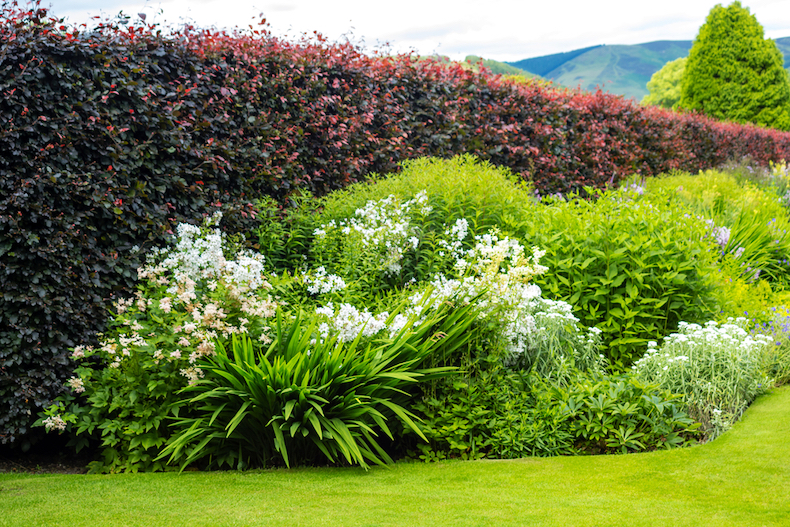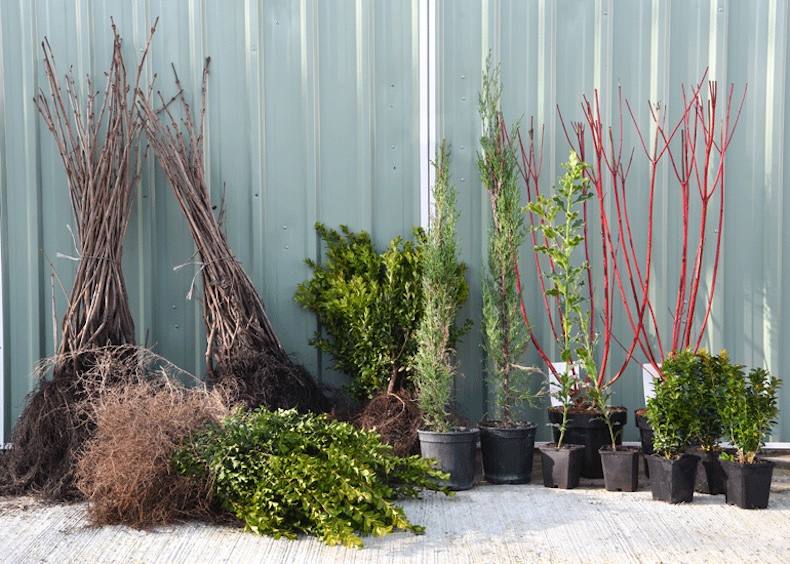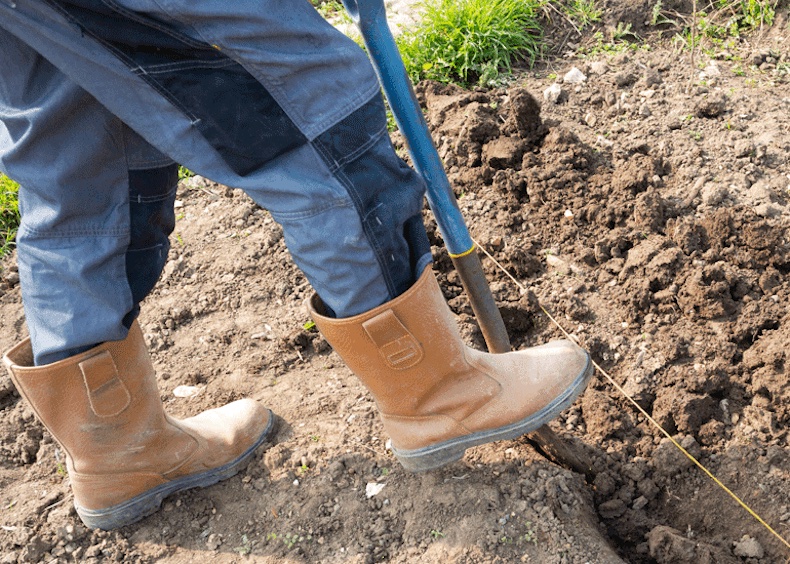How to plant hedging

Add privacy to your garden with hedging
Image: Julietphotography/Shutterstock
A well-cared for hedge can be a real asset in your garden. Whether you're looking to establish boundaries, improve security or encourage more wildlife, there's a hedging plant for every purpose. Hedges can be bought as bare root, root wrapped or potted plants, but they're all planted using the same basic principles. Keep reading to learn everything you need to know about planting and growing a healthy hedge.
Bareroot vs. potted hedging plants

There's a wide range of hedging plants from which to choose
Image: Hedging plants from Thompson & Morgan
Deciding whether to buy bareroot hedging plants or potted plants can be a difficult choice. Here’s a quick summary of each:
The pros and cons of bareroot and root-wrapped hedge plants:
- Cost-effective solution.
- Planted from October to February.
- Easy to plant.
- Quick to establish.
- Bareroots generally come as dormant whips with no soil at the roots.
- Root-wrapped plants are lifted from the field with a small amount of soil at the roots, held in place by a wrapping of synthetic material or natural hessian.
- Reduced plastic – supplied without containers.
The pros and cons of potted hedge plants:
- Planted all year round (but autumn to spring offers the most favourable conditions).
- Create instant impact in your garden.
- Generally more expensive.
- Take longer to fully establish.
- Supplied in containers so don’t need to be planted out so quickly.
What to do when your hedging plants arrive
Open your hedge plants as soon as they arrive. If you’ve ordered bareroots, stand them in a bucket of water to soak for an hour. If they’re potted or root-wrapped plants, water them thoroughly.
If you can't plant them out immediately, ‘heel’ the bareroot plants into a temporary location, or plunge the roots into a large trug of damp soil to stop them drying out. As long as you move them to a frost-free position where the vulnerable roots are protected from the cold, they can be kept like this for a few weeks.
Potted plants can simply be watered and stood in a sheltered spot outdoors.
How to prepare the soil for planting a hedge

A line of string will help you get your hedge neatly aligned
Image: Shutterstock
It's a good idea to prepare your soil in advance to allow it to settle before planting. You'll need to clear a 90cm (3') wide strip of grass and weeds. Dig over the soil to a spade’s depth to break it up, and mix in some well-rotted manure or garden compost, if you have any available.
When you’re ready to plant, use a string line to mark out a straight boundary. Remove the soil to around a spade's depth to form a trench along this line. Lay your plants out at evenly spaced intervals along the trench. The planting distances will vary depending on the species and the density you require. For example, Beech can be planted 30-45cm apart to create a dense hedge, whereas Leyland Cypress will need a wider spacing of up to 75cm (30in). Save time by cutting a cane to the required planting distance to avoid measuring between each plant.
You can plant hedges in a single row to create a simple hedge - but for a denser screen that gives better privacy, you may prefer to plant your hedge in two staggered rows.

How to plant your hedge
Once you’re happy with the spacing, simply spread out the roots in the trench and backfill the soil around them. Do this quickly so the pre-soaked roots don’t dry out. Check the base of the stem for a soil mark which indicates how deeply they were previously planted and be sure to plant them at the same depth. Then firm them in with your boot to remove any air pockets.
Root-wrapped and potted plants can be planted in a similar way. There's no need to remove the hessian wrappings as they’re biodegradable and will rot down as the plant establishes.
Once you’ve planted the entire row, trim your plants to the same height and rake the soil around the base of the plants to give you a nice finish. Finally, water them well to settle the soil and get them off to a great start.
Caring for your new hedge plants
- Water: Over the next two years you’ll need to keep your new hedge well watered, especially during dry periods. Where practical, it may be worth installing an automated irrigation system to make this task easier.
- Feed: Apply an annual application of bonemeal or slow release fertiliser each spring.
- Weed and pest control: Competition from grass and weeds will rob your hedge of valuable water and nutrients so keep the base of your hedge clear. Pests such as deer and rabbits can cause catastrophic damage to young plants. If you have a pest problem, install a plastic tree spiral around the stem of each plant to protect it from damage.
- Prune: Prune deciduous hedges in winter and evergreen hedges in spring. Most hedges will require pruning annually, but some species may require pruning up to 3 times a year. Browse our range of hedge trimmers to find the best tools for the job.
Video guide to planting hedging
We hope this has given you all the information you need to successfully plant your new hedge. For more advice, take a look at our hedges and trees hub page where you'll find growing guides, top tips and inspiration.

Written by: Sue Sanderson
Plants and gardens have always been a big part of my life. I can remember helping my Dad to prick out seedlings, even before I could see over the top of the potting bench. As an adult, I trained at Writtle College where I received my degree, BSc. (Hons) Horticulture. After working in a specialist plantsman's nursery, and later, as a consulting arboriculturalist, I joined Thompson & Morgan in 2008. Initially looking after the grounds and coordinating the plant trials, I now support the web team offering horticultural advice online.Sign Up For Exclusive Special Offers




© 2024 Thompson & Morgan. All rights reserved. A division of Branded Garden Products Limited.



